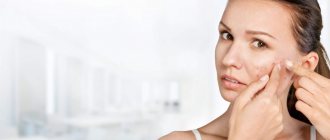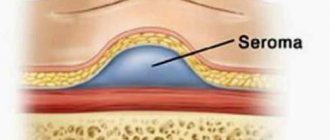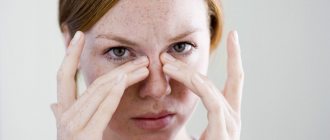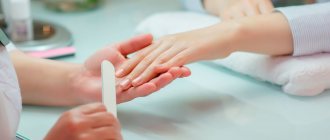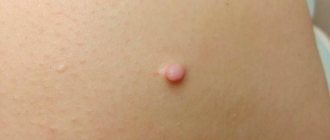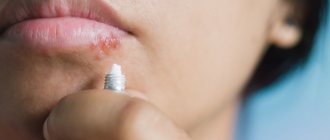A teenager already has mood swings, outbursts of anger or unexpected enthusiasm, a complex mental life and relationship with the world, and then also with the face of the problem. Pimples, redness, blackheads and oily sheen appear. How to deal with temporary problems so that they do not become permanent?
The hormonal background in the period from 12 to 17 years old rearranges the functioning of the entire child’s body in an adult way. Since the skin reflects metabolic processes and signals all the changes occurring inside, it cannot help but react to the level of hormones during puberty.
In developed countries, 50–95% of adolescents suffer from acne. Androgens in a teenager's body stimulate the sebaceous glands to produce more sebum. It “sticks” with dead skin cells, closing the ducts, and cannot come out freely. Bacteria and excess fat remain inside. The body turns on its defense: inflammation begins. The largest number of sebaceous glands are located on the face, chest, back and shoulders. Pimples appear in these areas.
Androgens are produced in both male and female bodies. But in men their level is much higher. Therefore, boys suffer more from acne in adolescence.
Not just age
There are additional factors that can aggravate the situation. The number of acne usually increases several times if:
- there are diseases of the gastrointestinal tract;
- there is a lack of amino and fatty acids;
- malnutrition;
- stress occurs (domestic problems, conflicts);
- weakened immunity;
- incorrectly selected cosmetics;
- the child squeezes out pimples on his own: infection gets into open wounds, an inflammatory process occurs, which provokes the appearance of more and more pimples;
- the child takes medications for a long time.
Even though teenage acne is not life-threatening, it can cause a lot of trouble for teenagers. Such an ordinary disease can negatively affect the future lives of young people: psychological discomfort from “less than ideal appearance” can cause low self-esteem, social alienation and isolation.
Severe forms of acne
There are special forms of acne, which are characterized by aggressive and severe course:
- Conglobat. Severe chronic form of acne, which is characterized by granulomatous inflammation and the formation of cysts, nodes, and abscesses. After resolution, retracted and keloid scars form.
- Fulminate. It is characterized by a severe course and an acute febrile reaction. Often, acne elements transform into ulcers, during the healing of which granulations are formed.
There are also inverse acne*, represented by papules and pustules with purulent contents, which often have an unpleasant odor.
Post-acne
Unfortunately, juvenile acne can leave behind unpleasant consequences called post-acne. At the sites of long-term inflammatory processes in acne, enlarged pores, vascular spots, pigmentation and scars may remain.
The formation of post-acne is promoted by: prolonged course of teenage acne, deep inflammatory elements, squeezing out pimples, late or inadequate treatment.
Do not touch! The main rule of skin care during adolescence is to never squeeze out pimples, blackheads, or other skin growths on your own. This will only worsen her condition.
Scarring after acne remains for life and is a serious cosmetic defect that is difficult to correct only with cosmetic procedures. The only way to prevent these secondary post-acne changes is individual and timely treatment of teenage acne.
Sweets
Excessive consumption of sweets leads to protein glycation. Our skin contains a large amount of collagen and elastin, which, when glycated, change their structure and become unrecognizable to the immune system. It does not recognize old collagen and elastin molecules and does not destroy them, and therefore no new collagen and elastin are produced. This accelerates skin aging, reduces tone, and age-related changes accumulate quite quickly. Therefore, those with a sweet tooth need to be mentally prepared for earlier wrinkles.
Ban on buns and coffee. What not to eat for breakfast Read more
Change menu
Nutrition plays a key role in skin health. Through it, the body removes unnecessary and harmful substances, so the quality and composition of food directly determines how the face will look. Here are a few rules to follow:
Less sweets
If you have skin problems, then the first thing you need to do is limit your consumption of sweets: chocolate, cookies, cakes and other confectionery delights. What did they do wrong? Sweets contain, in addition to flavor enhancers and preservatives, so-called fast, or easily digestible, carbohydrates, which means that after eating the blood sugar level rises sharply, causing a jump in the level of the hormone insulin. Such a jump promotes the activation of inflammatory processes at the cellular level and makes the body more susceptible to various infections. It follows that all traditional sweets contribute to inflammation and create conditions for the appearance of pimples and blackheads.
Let fruits and berries now take the place of the usual sweets in the diet. But here, too, moderation is required, since fruits and berries also contain fast carbohydrates (though without “chemicals”).
Avoid fatty foods
Excess fat obtained by the body from the food eaten is not only stored in the form of extra pounds, but also contributes to an increase in fat content. As a result, the pores through which the skin carries out gas exchange (“breathes”) and also removes harmful substances become clogged, and bacteria multiply in them. You need to ensure that the meat is lean. It’s good to add seafood to your diet and avoid eating smoked sausages and fatty dairy products, including cheeses.
Eliminate what is known to be harmful
Do not abuse fast food, chips, snacks, croutons and crackers. These products contain a lot of salt, spices, flavorings and oils. These ingredients hinder and disrupt the functioning of the intestines and sebaceous glands. You also need to be careful with the use of spices and seasonings (horseradish, sauces, mayonnaise, pepper, mustard). Frequent and abundant consumption of foods rich in essential oils - garlic, onions, radishes - can have a negative effect on the condition of the skin.
It is advisable to avoid spicy food - it affects not only the intestines and liver, but also affects the peripheral nervous system, which, among other things, is also responsible for the regulation of sweat and sebum secretion, as well as the tone of blood vessels.
It is worth taking a closer look at green vegetables and herbs - they are rich in zinc, which regulates the functioning of the sebaceous glands and ensures the normal functioning of the intestines due to their high fiber content.
Drink a lot, but not everything in a row
The best assistant on the path to healthy and beautiful skin is clean drinking still water. You need to drink at least 1.5-2 liters of liquid per day (you can add other drinks, but the majority of this dose should be water). If this is an unusually large amount, then you can simply put a bottle of water next to you and drink small portions throughout the day.
You should be careful with various carbonated and non-carbonated drinks. They usually contain a lot of sugar and a whole list of chemicals (dyes, preservatives, taste improvers, stabilizers). Thus, these “thirst quenchers” deal a double blow - they negatively affect the condition of the gastrointestinal mucosa and lead to the development of skin rashes, allergic reactions and acne, which are nothing more than the body’s attempt to get rid of unnecessary “chemical cargo”.
Among dairy products, it is better to give preference to kefir and live yoghurts. They improve metabolic processes and normalize intestinal flora.
Maintain regularity
The modern rhythm of life dictates its own rules. Many people no longer even notice the lack of breakfast, the replacement of a full lunch with constant snacks throughout the day, and they often overeat at dinner, sometimes just before bed. Problem skin does not tolerate such neglect.
The body requires regular nutrition with three main meals, the last of which no later than 3-4 hours before bedtime. Light snacks if necessary.
But you shouldn’t expect quick results, even if you start eating right and following a normal daily routine. Harmful substances have accumulated in the body for more than one day; it takes time to cleanse the body. Moreover, at first after the introduced changes in diet, it may seem that there is some exacerbation of inflammatory processes on the skin. These are the consequences of enhanced removal of accumulated toxins from the body.
At the age of up to 25 years, the epidermis is completely renewed on average in 21-28 days.
Dairy
Dairy products contain sugar in the form of lactose. Whole milk leads to the appearance of inflammatory elements in people prone to acne, and when drinking heavily, it promotes additional glycation of proteins in the skin.
Fermented milk products are considered healthier, but in some patients they can cause an inflammatory reaction.
Milk substitutes made from soy, buckwheat and oatmeal also contain a large amount of fast carbohydrates, so these products should be equated to sweet drinks and consumed as rarely as possible.
Unsweetened sweet death. What unobvious foods contains sugar? More details
Proper care
Skin care for acne is a daily ritual, all stages of which must be learned, not confused or skipped. You need to wash your face twice a day with warm water. Avoid soap and use special products for oily skin for cleansing (better ─ gels and foams). After washing, use lotion or tonic - they prepare the skin for applying cream, disinfect and dry, tighten pores, and have a mattifying effect. The final stage is a special cream for oily and problem skin.
In the active stage of acne, the use of decorative cosmetics is not advisable, but during “quiet” periods the skin is quite tolerant of makeup. The main thing is that it is light and has few layers. When choosing products, you need to pay attention to the packaging: the “non-comedogenic” label is required. Concealing treatments with pigmented particles that even out skin tone will add calmness and confidence.
Cereals
Cereals are essential for the health of our body, but they also need to be chosen and consumed correctly. Skip cereals and boiled, slimy porridges in favor of whole grain side-dish cereals with a high content of coarse fiber. Such food will be absorbed more slowly by the intestines and will prevent a sharp increase in blood sugar. Its saturation with nutrients will also occur gradually, which is much more beneficial both for the body itself and for the skin.
Emergency supply of vitamins. 10 healthy products for self-isolation Read more
Treatment according to instructions
To the question “what will help with acne?” there is no clear answer. It is difficult to single out the main “anti-acne” components: good treatments contain a complex combination of active substances. And yet there are ingredients that are better to remember (and check on occasion for yourself and your specialist):
Anti-inflammatory
: linoleic acid, niacinamide, allantoin, zinc salts, azelaic acid, extracts of tea tree, sage, chamomile, witch hazel, aloe vera.
Antibacterial
: piroctone olamine, glycasil, sulfur, plant extracts of calendula, chamomile, green tea, burdock, essential oils of tea tree, lemon, clove.
Keratolytic
(softening and exfoliating): ANA and BHA acids, retinoids, glycasil, azelaic acid, sulfur, bromelain, bodyaga.
Sebum regulators
: retinoids, linoleic acid, azelaic acid, extracts of green tea, pumpkin, burdock, cedar.
Matting
: aluminum and calcium salts, perlite, clay, kaolin, silicon.
Pharmacy brands undergo careful monitoring under the supervision of dermatologists and are prescribed by doctors, therefore they are preferable for caring for problem skin.
In addition to proper care and corrective drug treatment, beauty salons will be happy to offer a number of procedures to improve the condition of the skin. Which of them will be effective (for example, facial cleansing - mechanical or ultrasonic, various peelings) will be determined by a specialist during a consultation, taking into account the condition of the teenager’s skin.
Diagnostics
If signs of acne occur, you should consult a dermatologist or dermatocosmetologist. The doctor will not only evaluate the number of elements, their nature, location and the presence of signs of post-acne, but will also clarify the patient’s dietary habits, whether close relatives have suffered from similar acne on the face, and a number of other points. In general, acne can be diagnosed and its severity determined at the first consultation, since the disease has a specific clinical picture.
But in order to choose the optimal treatment tactics, you need to accurately determine the cause of acne development and assess the general condition of the body. For these purposes, patients are prescribed:
- UAC;
- OAM;
- blood chemistry.
Identifying the cause of acne is extremely important, as it is a chronic disease. Therefore, in the absence of control, it can recur at any time when favorable conditions are created.
When diagnosing post-acne, the nature of facial skin changes, the presence of scars, their shape, depth, localization, and ability to smooth out when the skin is stretched are also assessed.
How to treat acne in a teenage girl?
For mild acne in girls, they are prescribed standard therapy using topical medications. With moderate acne, you may need to be examined by a gynecologist, endocrinologist, perform an ultrasound of the pelvic organs, and determine hormone levels. An endocrinologist examines carbohydrate metabolism and thyroid hormone levels. 29
What are the causes of back acne?
Western doctors call acne on the back of adults “bacne.” And although the foci of inflammation are not as noticeable as acne on the face, this does not make it any easier.
The causes of acne in adults on the back are the same as on the face:
- genetic predisposition
- hormonal imbalance
- poor nutrition
But the formation of acne on the back of an adult is also provoked by external factors:
- Cloth. Constantly wearing synthetic fabrics creates a favorable environment for the proliferation of microbes.
- Ultraviolet. Sun rays damage the skin and reduce immunity.
- Poor hygiene. Lack of hygiene procedures contributes to the accumulation of sebum on the skin.
Treatment for back acne in adults may vary. In women, acne on the back may indicate diseases of the reproductive system. Often women are addicted to diets, which provokes hormonal imbalance. In men, acne on the back is associated with fluctuations in the level of male hormones.
What does acne look like?
Acne on the skin in adults can manifest itself in different ways depending on the severity of the inflammation process. Acne in adults is localized in areas where the glands are highly active and the pores are maximally enlarged. Cheeks and cheekbones are less prone to acne.
Acne in an adult can be of several types regarding external manifestations:
- Black dots. Occurs on the surface of the skin. Black dots are skin pores in which the secretion of the sebaceous glands, keratinized epidermis, and dust have accumulated.
- Closed comedones. The skin pores are filled with condensed secretions and, as they oxidize, acquire a gray-black color.
- Nodules. Subcutaneous painful inflammation. Noodles feel like hard bumps to the touch.
- Papules. Small reddish pimples without purulent contents.
- Pustules. Everyone knows “classic” acne. They are accompanied by the discharge of pus.
Acne in adulthood occurs in several stages:
- Easy. Moderate oily skin, a small number of blackheads.
- Average. More intense oily shine, from 10 to 20 whiteheads and blackheads.
- Moderate. A significant number of comedones with obvious signs of acute inflammation are formed on the skin.
- Heavy. Large painful pustules, regular inflammatory processes.

